Birds

Learn about the birds that you can see while travelling in Patagonia. The chances of a sighting will vary based on the season, location and species.
Discover MoreDeep roots in Patagonia: We are ex-guides, tour leaders, outdoor enthusiasts, & adventurers.
We’ve got our feet on the ground: Impartial advice, a bespoke service, and at no extra cost.
For the ends of the Earth: Sustainability is more than our carbon footprint (but we’re reducing that too).

Patagonia’s waters are teeming with marine life, from predatory killer whales to playful Peale’s dolphins. Elephant seals and sea lions haul out on rocky beaches, while Chilean dolphins and sea otters cruise the fjords. Prepare yourself for once-in-a-lifetime encounters with some of the world’s most remarkable marine species.
You might find 3 main types of whales during your trip in Patagonia.
Blue Whales—the largest animals on Earth—can also sometimes be spotted off Chiloé Island, where a distinct genetic population (a group with unique DNA differences from other blue whale populations) gathers between January and April to feed in its krill-rich waters.
Orcas, the largest members of the dolphin family, can grow up to 9m long and weigh 10 tonnes. As well as their striking black-and-white markings, they are recognised by their towering dorsal fins.
These intelligent predators live in matriarchal groups, where older females, sometimes including grandmothers, lead and teach the younger generations. They use sophisticated hunting techniques, such as coordinated strikes in shallow waters to herd and capture schools of fish. Patagonia’s famous orcas, found around Peninsula Valdés, are known for beaching themselves at high tide to catch sea lion pups. They can also be spotted in southern Chile’s fjords.
Keep your eyes peeled for spy-hopping—where they lift their heads above water to scan their surroundings, sometimes watching boats just as keenly as their prey.

Orcas practicing beaching themselves
From June to December, around 2,000 southern right whales migrate to the sheltered waters of Peninsula Valdés to mate and give birth. This is one of the best places to see them up close.
Easily recognised by their broad, finless backs and unique callosities (rough, raised patches of skin, often colonised by barnacles and whale lice), these whales are often active at the surface—breaching, tail-slapping, and even ‘sailing’ by holding their flukes in the wind. Naturally curious, they sometimes approach boats, making for unforgettable encounters.
Once devastated by illegal whaling, their numbers are slowly recovering, but they remain a highly protected species. Seeing them in the wild is a rare and special experience.

The boat rocked gently in the Golfo de San José as a shadow surfaced beside us—then a burst of breath, loud and sudden. A Southern Right Whale, barnacle-covered and massive, rolled just feet away, her calf bobbing beside her. She lingered, an eye visible above the waterline, watching us as intently as we watched her. Then, with a flick of her tail, she vanished, leaving only the sound of the wind and our stunned silence.
Lisette Nunez Ogalde Patagonia Team Leader
Humpback whales are among the most iconic great whales, growing up to 19m. They're known for their long flippers—up to a third of their body length—and unique fluke patterns, allowing researchers and guides to identify individuals.
They've also become famous for their spectacular breaches, haunting songs and using ‘bubble netting’ to trap fish with spirals of air before gulping them down.
The fjords of southern Chile, especially Francisco Coloane Marine Park, provide a rich feeding ground during the austral summer. Unlike many, the humpbacks here stop to feed rather than migrate to Antarctica before heading north to breed. With growing numbers, you'll be visiting one of South America’s top whale-watching destinations.

Click on the whales on the map to find out more
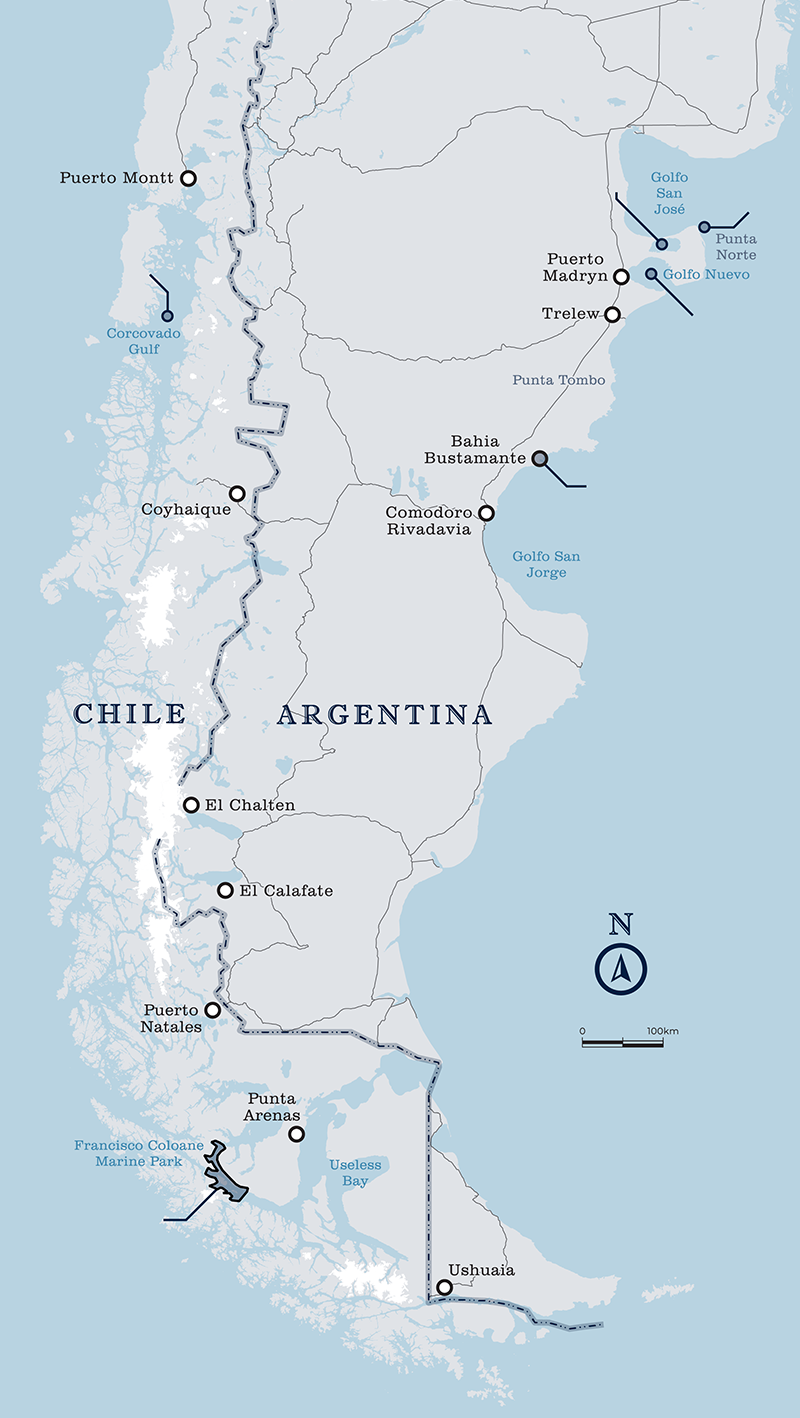
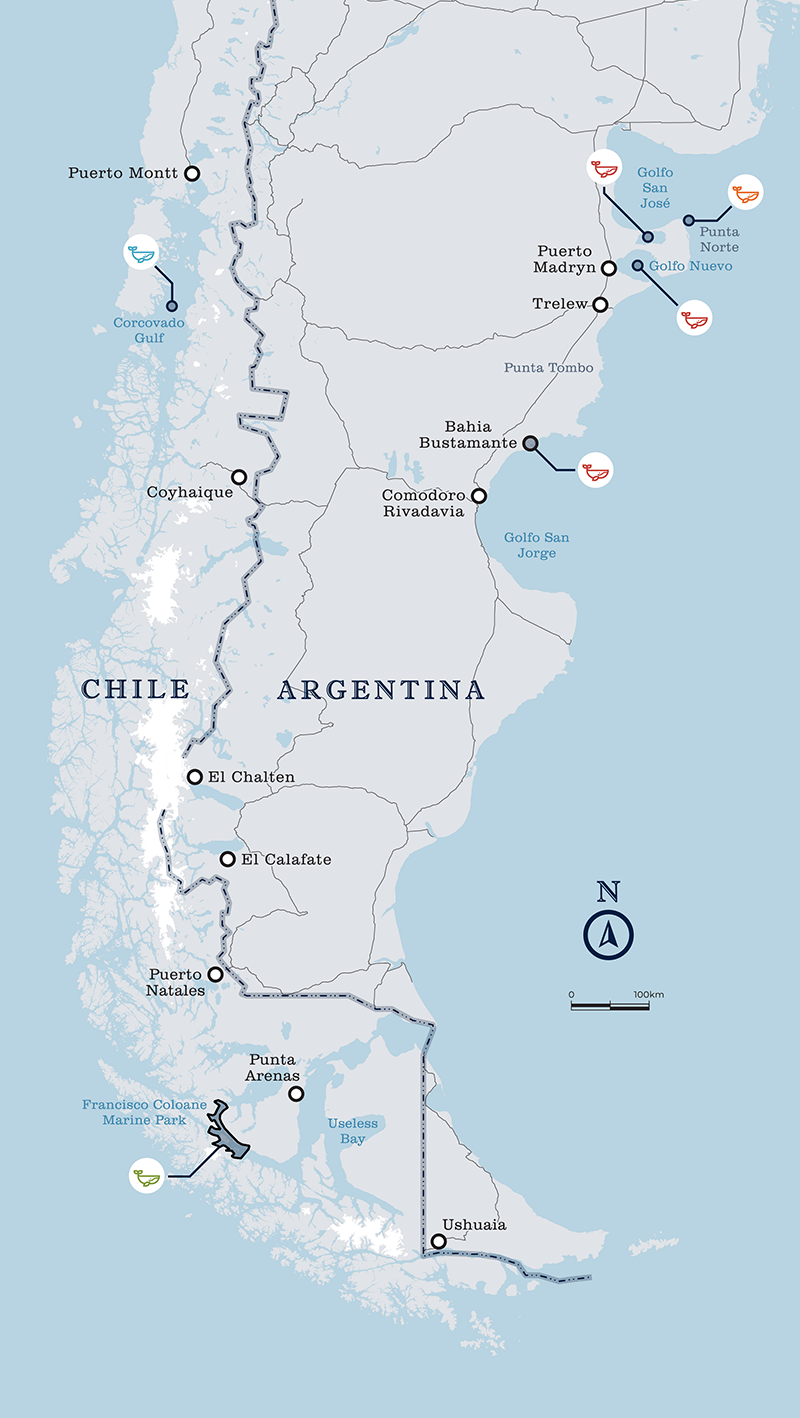
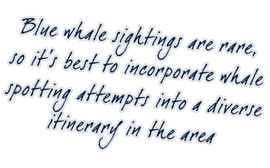
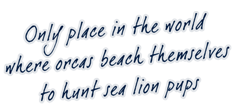
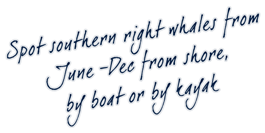
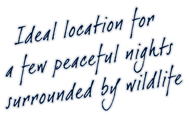


Blue whales are the largest animals known to have existed on the planet. They can be hard to spot as they only reveal part of the body at the surface. Chile’s waters host a globally important feeding ground for Pacific blue whales.
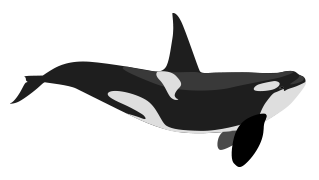
Orcas (or killer whales) are the largest member of the dolphin family. Found in all oceans, they live in complex matriarchal societies. In Peninsula Valdes they hunt by beaching themselves during the sea lion breeding season.

Southern right whales come to Peninsula Valdes to breed and give birth. They are recognisable by the large callosities on their heads. Highly active on the surface, look out for whale ‘sailing’ – elevating their flukes to hang in the wind.
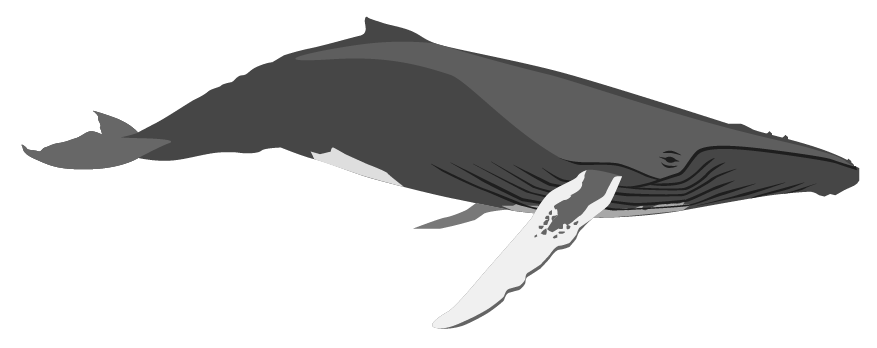
Humpback whales gather in the Southern Chilean Fjords to feed during the summer. They are the most vocal of the great whales. Their huge flukes are like fingerprints, allowing individual whales to be recognised by scientists.
As you'll see from the interactive guide, the species vary by season and location, so we recommend you check this information before your trip.
Francisco Coloane Marine Park (Chile) - A top spot for humpbacks, this remote marine park in the Strait of Magellan is only accessible by boat. Whales feed here all summer, with frequent breaching displays. You may also spot orcas, sea lions, and Magellanic penguins.
Peninsula Valdés (Argentina) - From June to December, southern right whales breed here, best seen by boat or from the beaches of Puerto Madryn. Orcas are present year-round, with dramatic beach hunts from February–April and September–November.
Corcovado Gulf (Chile) - Between January and April, blue whales gather near Chiloé Island. Wildlife cruises offer the best chance to spot them, though sightings aren’t guaranteed.
If you've booked an adventure cruise with Australis or Skorpios, there is a chance to see humpback whales, orcas and sea lions (plus Commerson’s, Dusky and Peale’s dolphins) depending on your route and when you're travelling.
Key tip - Consider packing some binoculars to look out for wildlife and get a closer look at anything you spot.
Patagonia’s waters are home to several lively dolphin species, each adding their own charm to the region’s marine life.

I'd say for the best chance to spot dolphins in Patagonia, head out early in the morning or late afternoon when the waters are calmer. Keep your eyes peeled for splashes or fins breaking the surface, particularly near boats, as dolphins often ride their wakes.
Carys Siney Senior Customer Experience Specialist
Southern elephant seals, the largest of all seals, can be found in big colonies at Peninsula Valdés, where males can reach 6.2 metres and 4 tons. South American fur seals, found lazing in caves or on rocky slopes, dive to feed on fish and squid at night.
South American sea lions, which inhabit the Valdés Peninsula, are fierce creatures with males forming harems of up to 10 females, aggressively defending their territories.
What's the difference? Generally, seals have smaller, internal ear flaps and cannot rotate their hind flippers for walking on land, while sea lions have external ear flaps and can rotate their hind flippers to walk on land.

Patagonia's coastal waters and rivers provide a habitat for two elusive otter species: the marine otter and the southern river otter. Both are endangered, facing threats from past hunting and current conflicts with fisheries.
The marine otter, a natural sea dweller, is often seen effortlessly floating on its back but is also adept at hunting crabs and fish. Meanwhile, the southern river otter constructs hidden burrows along shorelines, diving for a diverse diet of fish, shrimp, and amphibians.
Spotting either of these agile creatures in the wild is a rare and precious glimpse into Patagonia's fragile ecosystem.
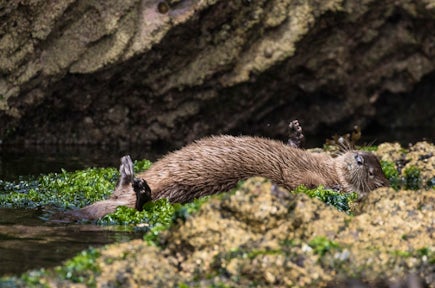

Learn about the birds that you can see while travelling in Patagonia. The chances of a sighting will vary based on the season, location and species.
Discover More
Explore Patagonia’s diverse mammal species, focusing on the iconic Andean puma, guanacos, and the endangered huemul deer, alongside other wildlife like foxes, armadillos, and …
Discover More
From elusive cats and soaring condors to waddling penguins, this page offers a look at Patagonia’s diverse animals and the unforgettable encounters awaiting you.
Discover More